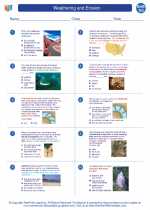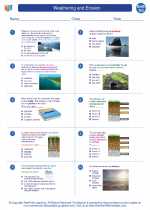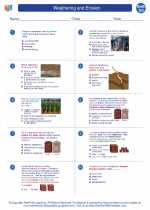Grasslands
Grasslands, also known as prairies or savannas, are ecosystems dominated by grasses and other herbaceous plants, with few trees or shrubs. They are found on every continent except Antarctica and are characterized by their vast open spaces and diverse wildlife. Grasslands are crucial for biodiversity, carbon storage, and agricultural production.
Types of Grasslands
There are two main types of grasslands: tropical and temperate.
- Tropical Grasslands: Also known as savannas, these grasslands are located near the equator and have distinct wet and dry seasons. They are home to a wide variety of wildlife, including large herbivores such as zebras and elephants.
- Temperate Grasslands: Found in temperate regions, these grasslands experience hot summers and cold winters. They are often referred to as prairies in North America and steppes in Eurasia. Bison, deer, and prairie dogs are some of the animals that inhabit temperate grasslands.
Climate and Soil
Grasslands are typically located in areas with a semi-arid to sub-humid climate, receiving between 10-30 inches of rainfall annually. The soil in grasslands is often deep and fertile, making it suitable for agriculture.
Importance of Grasslands
Grasslands play a crucial role in supporting a wide range of plant and animal species. They also provide important ecosystem services, such as carbon sequestration, water filtration, and soil fertility. Additionally, grasslands are significant for agriculture, providing grazing land for livestock and serving as a source of grain production.
Human Impact
Human activities, such as agriculture, urbanization, and overgrazing, have led to the conversion and degradation of grasslands. Conservation efforts are important to protect these valuable ecosystems and the species that depend on them.
Study Guide
- Describe the main characteristics of grasslands.
- Differentiate between tropical and temperate grasslands, providing examples of each.
- Explain the climate and soil conditions typically found in grassland ecosystems.
- Discuss the importance of grasslands for biodiversity and human activities.
- Identify and analyze the human impacts on grassland ecosystems.
[Grasslands] Related Worksheets and Study Guides:
.◂Earth Science Worksheets and Study Guides High School. Weathering and Erosion

 Worksheet/Answer key
Worksheet/Answer key
 Worksheet/Answer key
Worksheet/Answer key
 Vocabulary/Answer key
Vocabulary/Answer key
 Vocabulary/Answer key
Vocabulary/Answer key
 Vocabulary/Answer key
Vocabulary/Answer key
